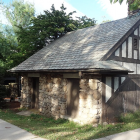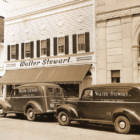Footer Featured Widget
Letter: ‘Friends of Our 1913 Library’
|
The Friends of Our 1913 Library are fully in favor of a new library building, as a neighbor to the preserved 1913 section of the current library, but with the town looking towards greater tourism and economic development, and with it holding itself out as a destination for those interested in seeing fine architecture, it is ironic indeed that it appears poised to allow the total, and unnecessary, demolition of 1913 which is the town’s most familiar, most admired and most used downtown public building. Such a momentous decision, with the potential for having for highly embarrassing publicity, could well hurt more than help that new town initiative. Many prominent architects in town, including one whose grandfather was a mason involved in the building of it, are absolutely horrified at the prospect of the 1913 section of the current library being torn down unnecessarily with such comments as “a magnificent building, a gem,” “a building with the absolute highest level of architectural detailing,” “it has an exceptionally high quality of architectural design,” “by far the best building architecture in downtown,” “keeping it should be an absolute no brainer,” “I cannot imagine how anyone could be even thinking of tearing it down.”
A professional report prepared by experts in historic buildings finds the building to be in extremely good shape. The library’s flooding and leaking problems are not caused by the oldest parts of the library. Unfortunately, the unwillingness of the library administration to consider, or even hear of any alternate plan, which could keep 1913, has the makings of very protracted dispute which well could result in a referendum. The library’s leadership’s characterization of even the oldest parts of the current library as an “eyesore” with the firm demand that all of it must “leave the property,” in favor of some extremely costly green space is short sighted, and could well start hurting the libraries worthy efforts towards the new and better library building.


